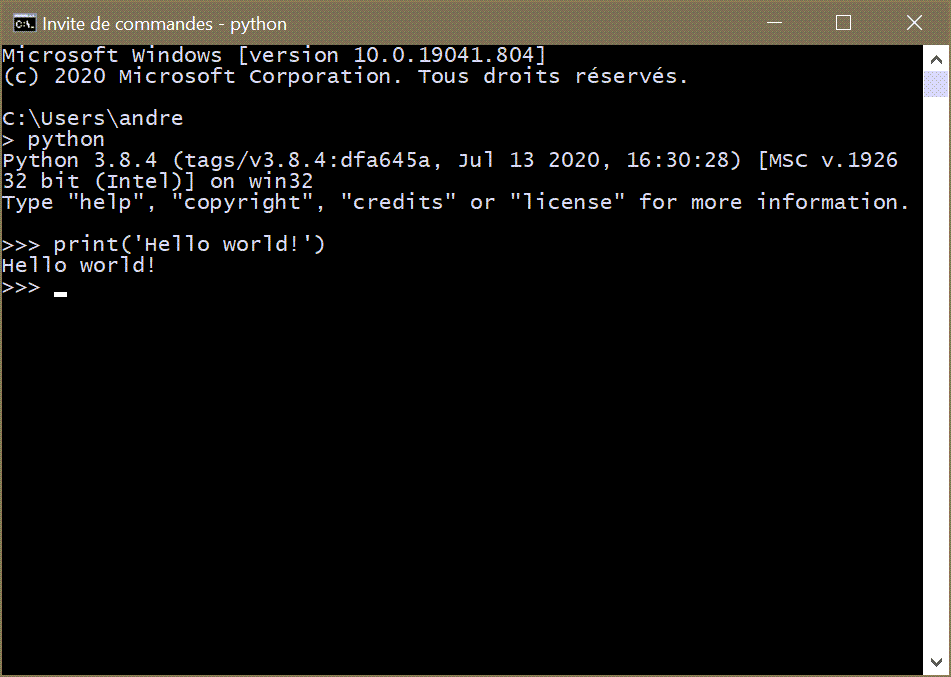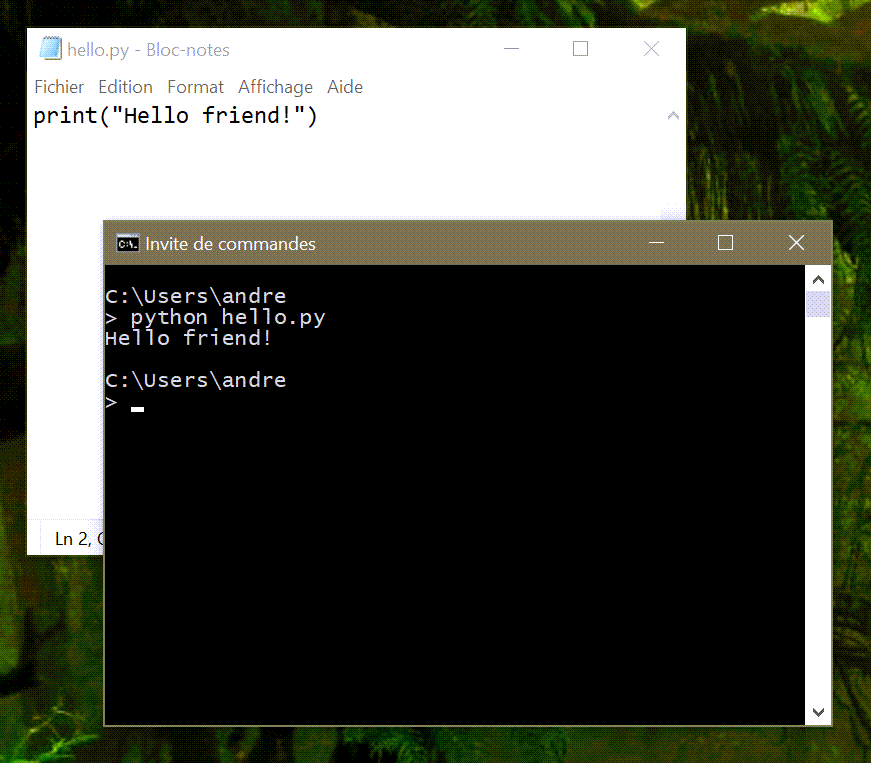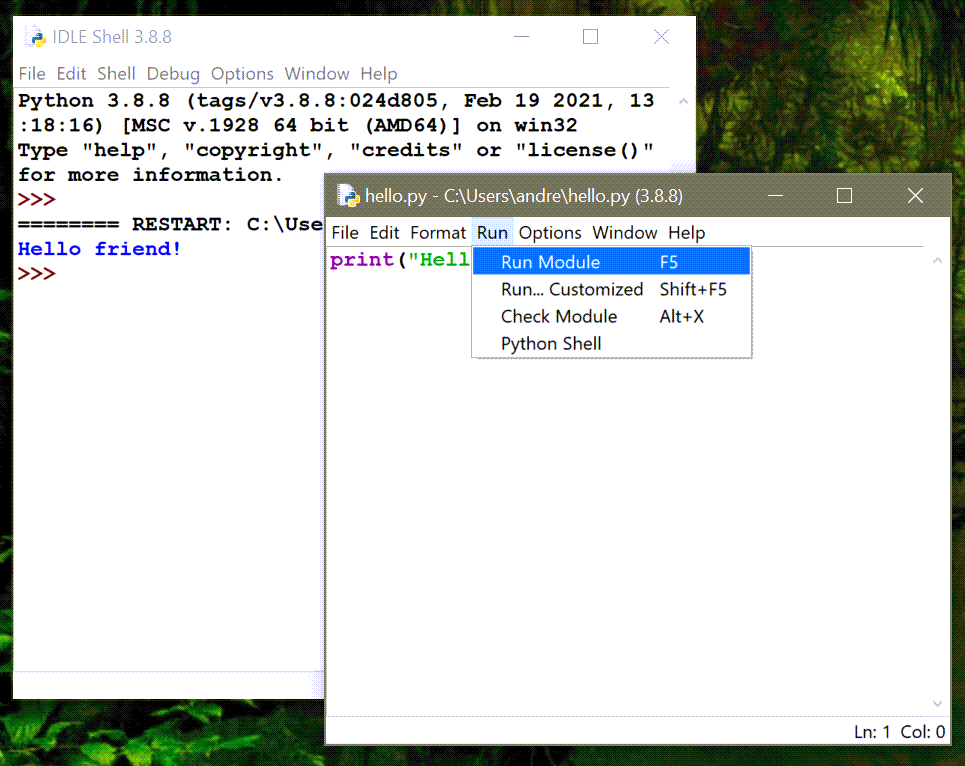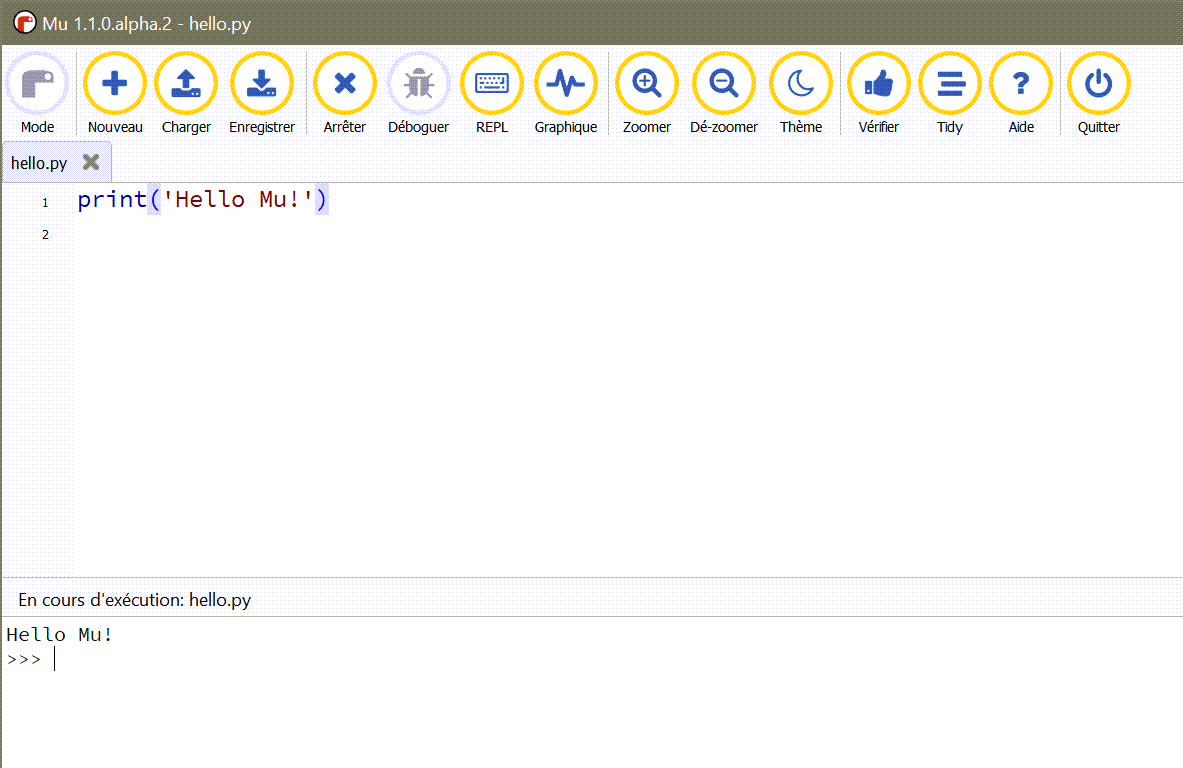Warning
This project is being split into 3 separate projects:
friendly_traceback,friendly, andfriendly_idle.
The documentation does not reflect this change.
If you are a end-user, just install friendly until further notice.
Useful information for beginners¶
Tip
If you already know how to run Python programs from a terminal/command line, and know what is meant by a “REPL”, you should go directly to the next page.
The information in this page is not intended to take the place of a complete introduction for beginners.
What is a REPL?¶
A REPL (Read-Eval-Print Loop) is an interactive mode where
we are invited to type in some Python code after
prompt (most often written as >>>). Python reads
this code, interprets what it means, and might “print” (show) some
result before showing another prompt waiting for us to enter
more code.
Other words sometimes used instead of the REPL acronym are “console”, “shell”, and “interpreter”.

In the image shown above, I have started a python interpreter
using the command python, and entered the code
print('Hello world!') at the prompt.
The python command refers to whatever you need to type to invoke your
favourite Python interpreter in a terminal on your computer.
It could be python, python3, py -3.8, etc.
How to run a Python program¶
Instead of using an interpreter to type code when prompted
by Python, you can use an editor, save your program in
a file (named hello.py in my example) and run
it in a terminal by using the command
python hello.py.

Another option is to use a program like IDLE which includes both an editor and a python interpreter.

There exists many other editors designed to be used by Python programmers. For example, some of you might be familiar with Mu:

Summary¶
You can run Python programs by typing python ... or python3 ...
in a terminal or by using and editor with a built-in menu
for running Python programs.
In the early part of this documentation, the examples I will use
will be mostly done using python ... in a Windows terminal.
Even if this is not the way that you normally run Python programs,
it would be most helpful if you tried to follow along by doing
something similar to what I show.